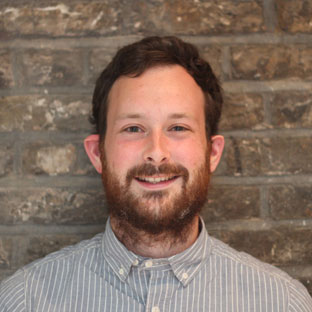Catch up with what RSA staff have been watching this summer, from industrial China to pub karaoke.
In the future, think tanks and social change organisations (and the RSA aspires to be the best of both) will rely more heavily on video and film to communicate to the public and to specific audiences. It is inevitable. As smartphones and network bandwidth improve, the internet will become (even) more about watching stuff, as well as reading stuff. Most simply "watch this" is more and more popular within digital social networks than "read this". Digital culture is largely visual culture and we all need greater visual literacy.
That is why, as well as being a prolific publisher of words, YouTube is important to us. It now reaches more people than any news website, or any newspaper. The RSA maintains an incredible YouTube archive of (almost) every public lecture that happens in the building. In relation to our own research, we're also interested in creative uses of video to communicate findings, insights and recommendations. We've produced some interesting stuff exploring creative teaching, entrepreneurial inequality and talent in the music industry and we want to do more.
To prepare for a more visual future, and to have an excuse to drink beer in the office, staff have dimmed the lights for an hour, once per month, and sat together to watch and reflect on some amazing films, relevant to a policy issue that we are working on.
We kicked things off in May with the awesome Wired feature on Shenzen, a huge modern industrial city adjacent to Hong Kong. Shenzen is the 'Silicon Valley of Hardware' and it's economic output is higher than Portugal, Ireland or Vietnam. If you're tired of hearing about innovation, this film brings the concept to life, and considers how stuff is made and who owns an idea. Viewers who don't like patent infringement might find some scenes disturbing. The RSA kicked off research this month with European partners looking at Cities of Making.
Last month we focused on short films about heritage, identity and place, which has been a key theme of RSA work for several years. First up, One for Sorrow: simply drone footage of art installations in the dramatic landscape of Barrow-in-Furness, on the Cumbria coast. These pieces insert human stories to encourage residents to explore the militarised landscape in which they live. The arts collective Art Gene have been given a government grant to develop the economic plan for the town. They are huge fans of the RSA Heritage Index, because it validated their focus on connecting residents to the rich history all around them, in order to engage them in the future of the town.
My city is a request from a Londoner for visitors and outsiders to more comprehensively understand the city and its diversity. Is there are more powerful way to communicate in 3 minutes? George the Poet is an RSA Fellow who voiced the 'What is the RSA?' animation.
Hyson Green is a neighbourhood in Nottingham – this Alan Partridge-style news feature shows how the media seek to understand and interpret deprivation...often based on thin evidence. This piece was produced almost 40 years ago, but the same narratives – that high-rise living is inhumane, that the built environment determines behaviour – have ebbed and flowed ever since.
The Social Life of Small Urban Spaces is an incredible piece of work. In the late 1970s urbanist William H. Whyte set up cameras on top of buildings to observe how people used New York's public spaces. He studied the tapes, learned a lot, and used this to successfully influence planning policy and set up a think tank. If you like Jane Jacobs, you'll love this – even just the first 10 minutes. (Watch here.)
Every Sha La La takes you to a pub in Bolton, and karaoke culture. This film was commissioned by a housing association. Watch the first 12 minutes, as we did, and you'll realise that 'everyday urbanism' is often the most valuable shared culture to a local community – and more often than not it depends on unsung (!) buildings like pubs. Making these kind of films is an intervention that encourages people to reflect on their lives, to consider the cultural heritage that they are part of, and feel more connected to others and to their local community.
On Grimsby Docks is a lovely film by The RSA's very own Jake Thorold. It considers how people in an industry deals with a sense of loss and decline, and makes us think what it might mean for everyone who lives in such a place. It makes you realise that film itself will be the medium by which we conserve our heritage, should fishing disappear from Grimsby soon. This film hasn't been published, but contact Jake if you are interested!
We'll be back next month. If there is stuff you think we should be watching, let us know, and let us know why.
Fin.

Be the first to write a comment
Comments
Please login to post a comment or reply
Don't have an account? Click here to register.